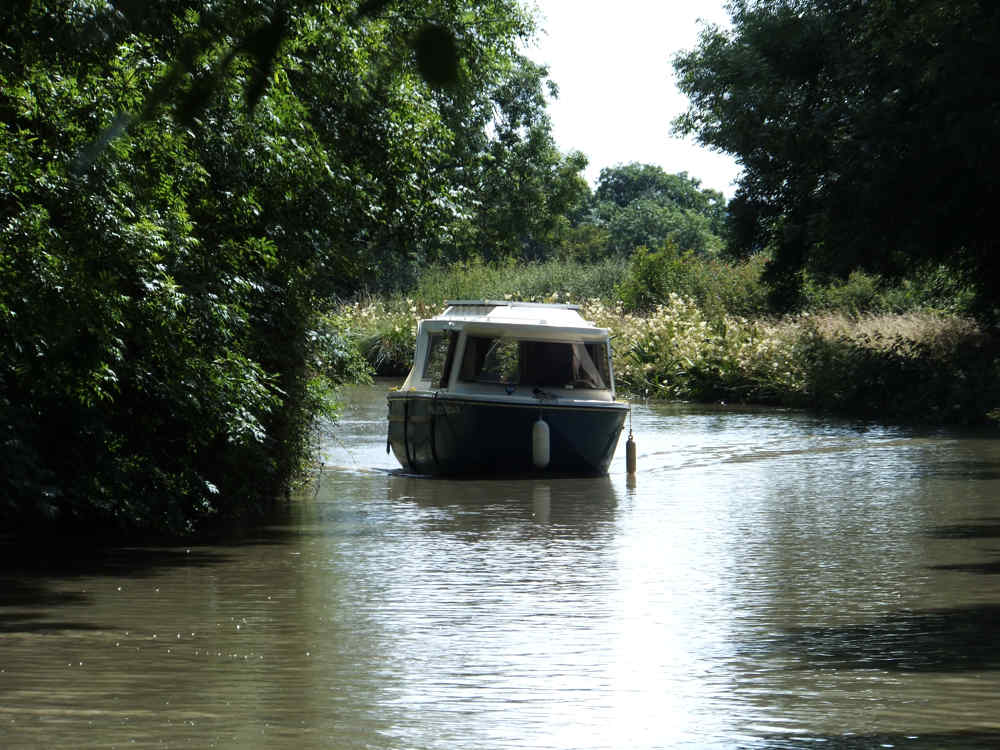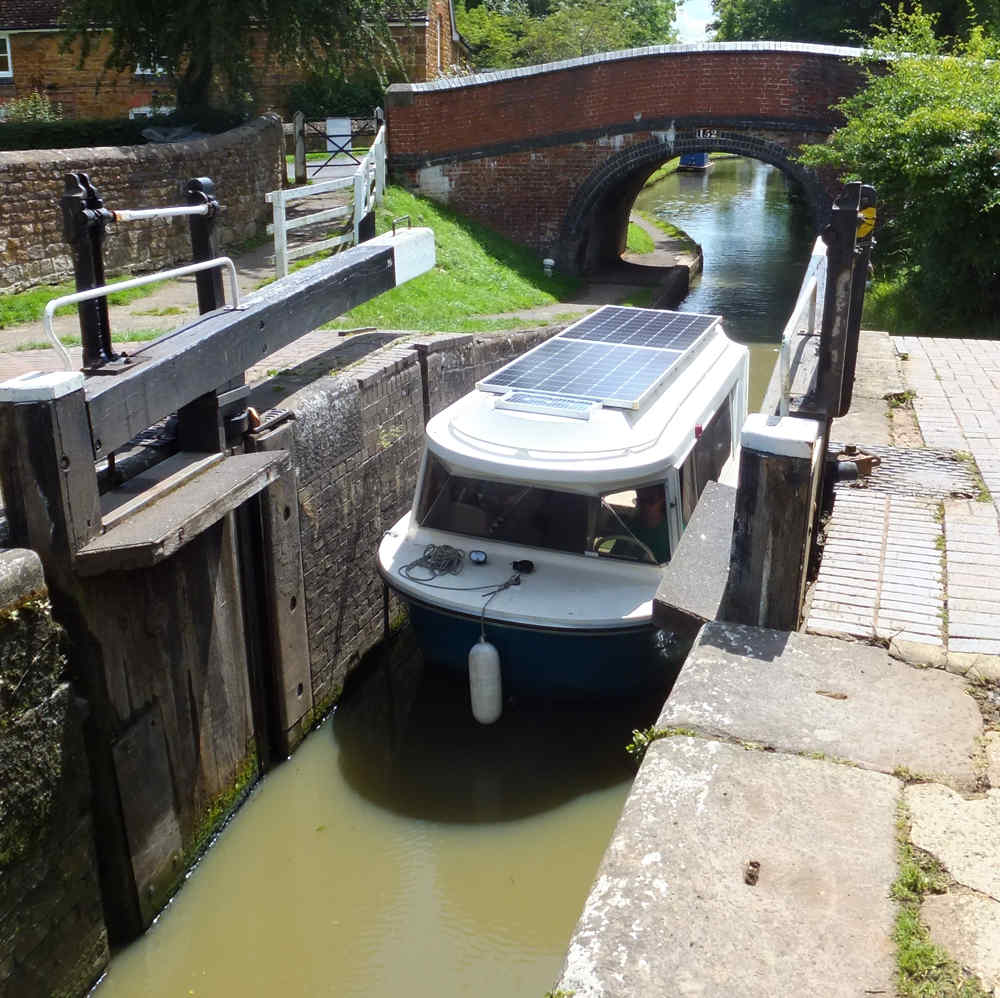
Shortly after lockdown restrictions ended in July 2020, we took Pike Lock Boat for a week long trip exploring the Southern Oxford Canal. We launched at Twyford just south of Banbury and started by heading south reaching Heyford Station 11.5 miles and 6 locks in what was a partial day - the weather was cloudy with rain about 30% of the time. We had two remote steering adapter with us but started off using the electric outboard motor's own tiller. However, part way through the day, the speed control switch developed a fault and started to burn out. This necessitated fitting one of the new adapters allowing the steering and the electronic control to be used at the front of the boat. Fortunately the new steering system, although still capable of improvement, did work this time. Electronic speed and direction control enabled the motor to be fixed on full power, a setting that had had minimal use so still had good switch contacts.
Day 2 got us to Oxford; a distance of 16 miles with 10 locks. It was cloudy all day but slightly brighter in the middle of the day. There was rain in the morning and heavy rain from 4pm. For about an hour it was possible to go into solar mode which means the output from the solar cells is applied directly to the motor with battery power only acting as a backup. To preserve the battery charge as much as possible, the speed was kept to about 2mph.
Day 3 was cloudy all day again with a bit of rain. On the way back out of Oxford, we explored both links between the canal and the Thames. This being the third day with just about no sun, it was decided to stop near Enslow after about 12 miles and 10 locks and some distance short of our target of returning to Heyford. The open circuit battery voltage was 23.6V and about 22.2V when running when we stopped.
Day 4 - mainly cloudy until lunchtime but then some sun at last and improving to continuous by evening. The mileage covered was 16 with 7 locks finishing at Twyford.

Day 5 - Thanks to the sunny evening and early morning, the o/c battery voltage had risen to 26.1V and 27.0V with 8.7A being delivered from the solar cells at 8:20am. ready for the start of the day. An hour was spent in Banbury with a second stop at Cropredy. There were long queues at some of the locks which made progress slow. In the end, we moored up about 1km north of the Claydon Locks after travelling 17miles and 13 locks. The o/c battery voltage was 26.4V when we stopped. There was a problem with the 3 way two pole switch which switches between charge and solar mode. One pole went open circuit but a work around was found to bypass the problem.

Day 6 - By the time it was time to start, the o/c battery voltage was 26.9V. It was sunny about 80% of the time and this enabled speeds of 2.6 - 3.0mph for much of the time in charge mode (there was some concern that the switch patch might create problems in Solar Mode so this was avoided just in case - but was tried successfully later). Mileage covered =16 with 9 locks.

Day 7 - Batteries started day fully charged (28.8V). Only 3 (wide) locks and about 1mile of boating to the extraction point at Calcutt Marina. When we launched the boat at Twyford, the trailer wheels dropped off the end of the slipway meaning that there was no prospect of recovering the boat there. Therefore it was necessary to get a taxi back to twyford to pick up the car, drive home to get a lighting board adapter (the lights are normally mounted on the boat), drive back to Twyford to pick up the trailer, drive to Calcutt Marina to get the boat and then drive home.
This trip did prove (again) that it is possible to have a week long trip covering a significant distance even with quite indifferent weather still powered by the sun.